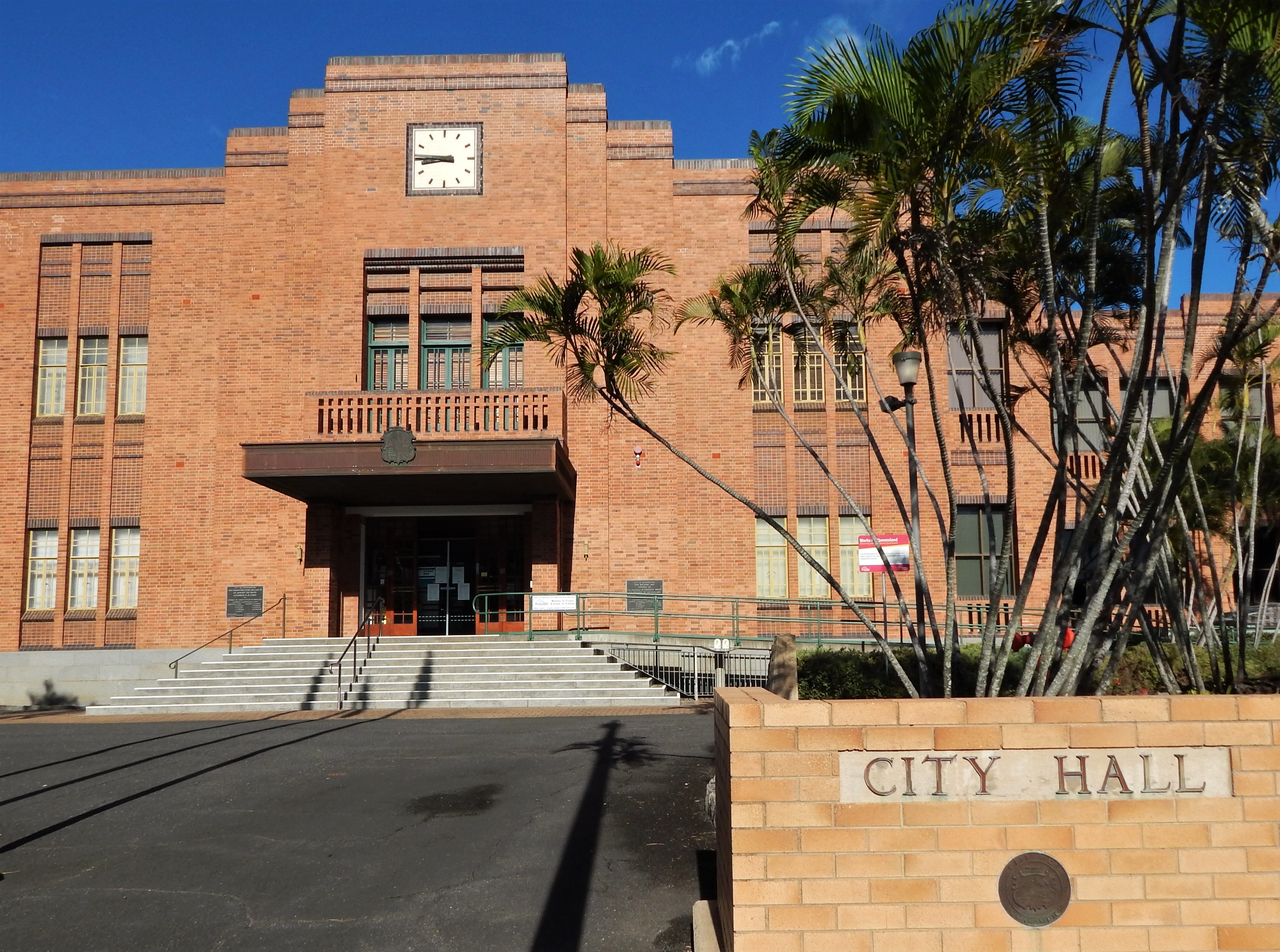|
Rockhampton City Hall
Rockhampton Town Hall is a heritage-listed town hall at 232 Bolsover Street, Rockhampton City, Rockhampton, Rockhampton Region, Queensland, Australia. It was designed by Hockings & Palmer and built from 1939 to 1941 by John Hutchinson of J. Hutchinson & Sons (now Hutchinson Builders). It is also known as Rockhampton City Hall and Rockhampton Council Chambers. It was added to the Queensland Heritage Register on 29 April 2003. History Rockhampton emerged as an important Queensland regional centre during the 1850s and 1860s. This development took on especial prominence after the discovery of the mining wealth at Mount Morgan in 1882. The additional affluence that flowed on for Rockhampton fuelled a rapid expansion of public and private buildings and residences throughout the City and surrounds. This building boom allowed for many grand places to be constructed, especially renowned along the commercial and government sector near the wharves on Quay Street, to the many elite ... [...More Info...] [...Related Items...] OR: [Wikipedia] [Google] [Baidu] |
Rockhampton City
Rockhampton City is the central suburb of the city of Rockhampton in the Rockhampton Region, Queensland, Australia. In the . Rockhampton City had a population of 1,953 people. It is informally known as Rockhampton central business district (CBD). Geography Rockhampton City is a roughly rectangular suburb, bounded by the Fitzroy River to the north-east, North Street to the north-west, Murray Street to the south-west and South Street to the south-east. It is rectangular apart from the area excised for the Rockhampton railway station which interrupts the boundary on South Street. Town Reach is the reach of the Fitzroy River beside the suburb (). History Rockhampton Congregational Church opened in Bolsover Street on Sunday 29 June 1862. The church could seat 250 people. On 23 September 1874, the foundation stone was laid for a new Congregational church by the Reverend Edward Griffith of Brisbane. The new church was officially opened on Sunday 29 October 1876. The new church ... [...More Info...] [...Related Items...] OR: [Wikipedia] [Google] [Baidu] |
Edwin Morton Hockings
Edwin Morton (Ted) Hockings (1870–1942) was an architect in Rockhampton, Queensland, Australia. A number of his buildings are now heritage listed. Early life Edwin Morton Hockings was born in 1870, the son of Albert John Hockings (one of the early mayors of Brisbane) and his wife Elizabeth (née Bailey). Edwin Hockings was educated at Brisbane Grammar School. Architectural career Hockings became the articled pupil of architect Richard Gailey. In 1890 Hockings won a design competition for the Rockhampton Girls Grammar School. Though Gailey's firm took over the final design work, Hockings departed to Rockhampton as the firm's clerk of works. In 1895 he was elected an Associate of the Queensland Institute of Architects, and thereafter commenced his own practice in Rockhampton from where he made his design mark throughout Central Queensland. In addition to his responsibility for the main school building of the Rockhampton Girls Grammar School, Hockings was architect for the tw ... [...More Info...] [...Related Items...] OR: [Wikipedia] [Google] [Baidu] |
City Hall Rockhampton Council
A city is a human settlement of notable size.Goodall, B. (1987) ''The Penguin Dictionary of Human Geography''. London: Penguin.Kuper, A. and Kuper, J., eds (1996) ''The Social Science Encyclopedia''. 2nd edition. London: Routledge. It can be defined as a permanent and densely settled place with administratively defined boundaries whose members work primarily on non-agricultural tasks. Cities generally have extensive systems for housing, transportation, sanitation, utilities, land use, production of goods, and communication. Their density facilitates interaction between people, government organisations and businesses, sometimes benefiting different parties in the process, such as improving efficiency of goods and service distribution. Historically, city-dwellers have been a small proportion of humanity overall, but following two centuries of unprecedented and rapid urbanization, more than half of the world population now lives in cities, which has had profound consequ ... [...More Info...] [...Related Items...] OR: [Wikipedia] [Google] [Baidu] |

